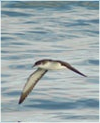Environmental Monitoring
In natural sciences, research often relies on extensive manual investigation. Such methods can be error-prone and obviously don’t scale well. The development of autonomous data acquisition systems based on Wireless Sensor Networks (WSNs) research has provides a method to significantly reduce the amount manual of work during field studies. It allows addressing of scientific questions that were previously infeasible.
Our research group gathered comprehensive experience in creating robust WSN based systems for environmental monitoring. In the recent years we worked in close collaboration with researchers from natural science area and together, we built and deployed a number of WSNs that run autonomously under real-world conditions.

Projects
AvianGPS: Lightweight Sensing Device
|
|
We extended the range of a typical Wireless Sensor Network beyond the boundaries of a stationary WSN deployment. We developed a lightweight backpack device for animals that is capable of monitoring the behavior and environment of animals even when they leave the area of the study. Furthermore, each AvianGPS device is able to communicate over the radio with other devices and with the deployed stationary WSN during an experiment. This allows continuous data synchronization without the need of recovering the backpack devices. |
Skomer Island: Autonomous Monitoring of Vulnerable Habitats
|
|
We developed a system for autonomous monitoring of animals and their environment. Combining a stationary WSN and custom software we were gathering data from a remote location, relaying it back for local storage and processing and allowing remote reconfiguration of the network by research scientists. In four iterations, while improving hardware and software solutions, we deployed this system on Skomer Island, UK in 2007, 2008, 2009 and 2010. |
VoiceLink
|
|
We built a system for autonomous nightingale song recording. It incorporated a number of cheap netbook computers spanning a wireless mesh network. Each netbook was capable of using few wired microphones for simultaneous nightingale song recording. The system was extended with a small embedded device based on an ARM microcontroller that could be easily placed very close to a nightingale nest. Management software supported reconfiguration of recording schedules and remote download of nightingale song records. |
Released Materials
For most of our projects, the entire documentation, hardware design files and the firmware were released. The hardware schematics, hardware drivers, firmware and the applications are available for download as open source under the Modified BSD License so that the assembled devices and parts of the design can be easily reused in research and commercial projects.
Visit the dedicated project pages listed above for more information.
Our Partners
- Computational Ecology and Environmental Science Group from Microsoft Research Cambridge
- The Oxford Navigation Group at the Department of Zoology from the University of Oxford
- Animal Behavior Group from the Freie Universitaet Berlin
People
Project coordinator and software developer: Tomasz Naumowicz
Hardware design: Dr.-Ing. Achim Liers
Hardware support: Hans-Peter Heitzmann
Former members:
- Markus Rudolph (Bachelor Thesis)
- Sascha Weinmann (Diploma Thesis)
- Simone Römer (Bachelor Thesis)
- Marco Ziegert (Diploma Thesis)
- Frank Beier (Diploma Thesis)
- Marco Hutta
Contact: Tomasz Naumowicz


